Carbon Credit Integrity Checker
Carbon credit trading used to be slow, messy, and full of hidden risks. Companies bought offsets to claim they were reducing emissions, but no one could be sure if those credits were real, if they were counted twice, or if they even helped the planet. That’s changing. With blockchain, carbon credits are now digital tokens-transparent, traceable, and tradeable in minutes instead of months. This isn’t theory. It’s happening right now, and it’s rewriting how the world buys and sells climate action.
What Exactly Is a Tokenized Carbon Credit?
A tokenized carbon credit is a digital version of a real-world carbon offset. Each token represents one tonne of CO₂ that was either removed from the atmosphere or prevented from being emitted. These aren’t just crypto gimmicks-they’re backed by verified projects like wind farms in Kenya, clean cookstoves in India, or forest protection in the Amazon. The key difference? On blockchain, every step is recorded permanently and publicly.Here’s how it works: A project developer gets their carbon reduction verified by a standard like Gold Standard or Verra. That credit is then locked into a trusted bridge platform-like Toucan Protocol or Flowcarbon. The platform mints a matching token on a blockchain, usually Ethereum or Polygon. That token carries all the original data: project name, location, vintage year, verification ID. Once minted, the token can be bought, sold, or retired just like any other digital asset.
Unlike old systems where credits sat in siloed registries, tokenized credits move freely across platforms. You can buy a token on one exchange and retire it on another. The smart contract automatically updates the original registry to show the credit is no longer available-preventing double counting. This is the first time in carbon markets that transparency isn’t just promised-it’s built into the system.
Why Blockchain Solves Carbon Market Problems
Traditional carbon markets have three big flaws: opacity, fragmentation, and slow processes. Blockchain fixes all three.First, opacity. In the past, buyers had to trust third-party reports. A credit might say it came from a reforestation project, but was it actually planting trees? Or was it a paper project with no real impact? With blockchain, you can trace every token back to its original registry entry. You see the project’s GPS coordinates, verification reports, and even photos. No more guessing.
Second, fragmentation. There are dozens of carbon registries-Verra, Gold Standard, American Carbon Registry, Puro. Each has its own system. Buying a credit from one often meant jumping through hoops to use it elsewhere. Tokenization breaks those walls. A BCT (Basic Carbon Tonne) from Toucan can be traded on any DeFi platform that accepts ERC-20 tokens. Investors don’t need to learn five different systems-they just use one wallet.
Third, slow processes. Buying a carbon credit used to take weeks: paperwork, bank transfers, manual verification. Now, with smart contracts, it takes seconds. A company can integrate an API into its sustainability dashboard and retire credits automatically every quarter. Small investors, who once couldn’t afford a full credit (usually $10-$15 each), can now buy fractions-like 0.01 of a tonne-for under a dollar. That’s democratizing climate action.
Major Platforms Making It Happen
You don’t need to build your own system. Several platforms are already handling the heavy lifting.- Toucan Protocol is the most widely used bridge. It turns verified credits into BCTs (Basic Carbon Tonnes), which are pooled and standardized. Most tokenized credits you’ll see are BCTs.
- KlimaDAO is more than a platform-it’s a currency. Every KLIMA token is backed 1:1 by BCTs. Holders aren’t just buying offsets; they’re betting on the value of carbon itself. Backed by Mark Cuban, KlimaDAO once hit a $3 billion market cap before crashing due to low-quality credits (more on that later).
- Carbonmark focuses on corporate buyers, offering direct access to high-integrity credits with full audit trails.
- Flowcarbon partners with major verifiers like Verra to tokenize credits and list them on regulated exchanges, making them accessible to institutional investors.
These platforms aren’t competing-they’re building the plumbing for a new market. Think of them like PayPal for carbon. They don’t create the value; they make it easy to move.
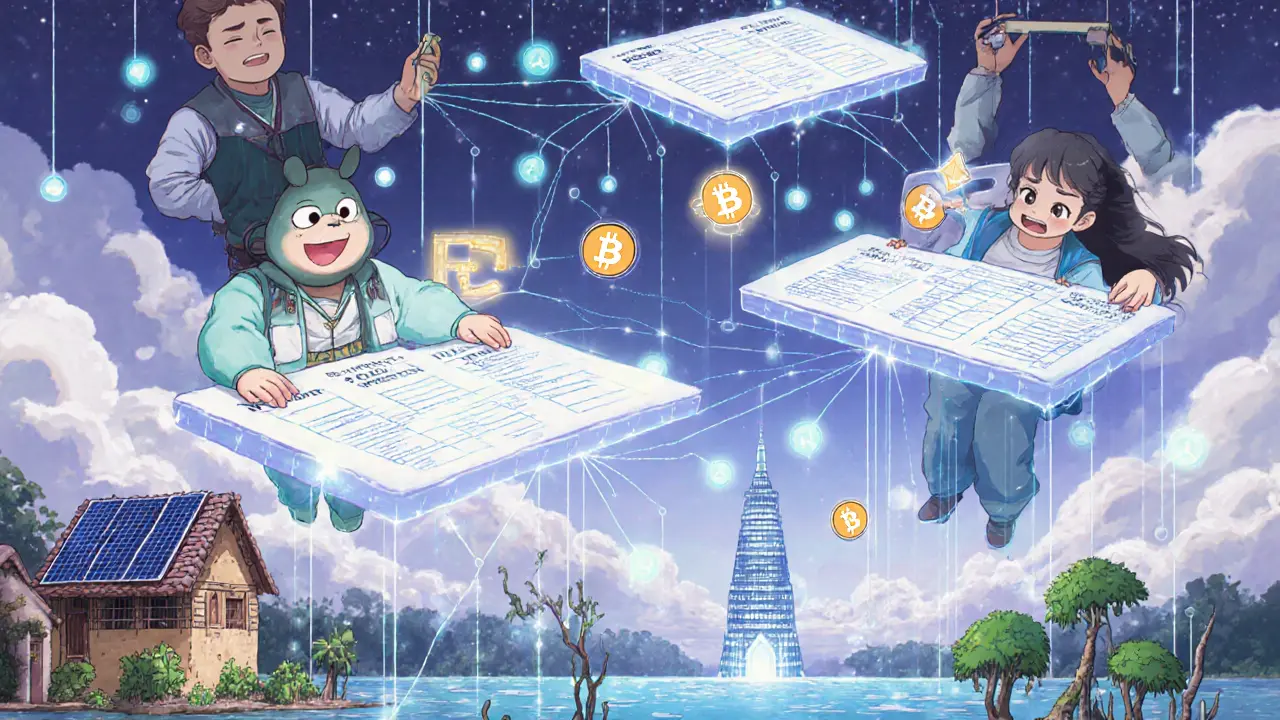
The KlimaDAO Crash: A Warning Sign
Not everything is perfect. In early 2023, KlimaDAO’s value collapsed after it accepted 670,000 Verified Carbon Units (VCUs) from a project in Yingpeng, China. That project claimed to destroy HFC-23, a super-potent greenhouse gas. But experts later found the project was created just to earn credits-no real emissions reduction occurred. The credits were technically valid under Verra’s rules, but ethically dubious.The crash exposed a fatal flaw: blockchain can’t fix bad data. If you tokenize a low-quality credit, you’re just making a bad thing more visible-and more dangerous. Transparency doesn’t equal integrity. A tokenized credit from a shady project is still a shady credit.
Gold Standard and other verifiers now stress that tokenization must include strict quality controls. Projects must prove they deliver real, additional, and permanent climate benefits-not just paperwork. Community-focused projects like solar microgrids in rural villages or clean water systems are now preferred. These don’t just reduce CO₂; they improve lives. Blockchain can track those impacts too-down to the number of households served.
How Smart Contracts Automate the System
The real power of blockchain carbon trading isn’t just trading-it’s automation. Smart contracts handle the boring, error-prone stuff.When you retire a carbon token, the smart contract does three things at once:
- It burns the token (removes it from circulation).
- It updates the original registry (like Verra) to mark that credit as retired.
- It logs the retirement on the blockchain for public proof.
No manual emails. No delays. No chance of forgetting. A company like Microsoft or Unilever can set up a rule: “Retire 10,000 tonnes of carbon every quarter.” The system does it automatically. Even better, some platforms let you link retirement to real-world events-like when a product is shipped or a building is powered.
APIs let businesses connect their ERP or sustainability software directly to carbon markets. No more spreadsheets. No more audits. Just clean, real-time accounting. That’s why corporate adoption is accelerating-especially in the EU, where regulations now demand verifiable, digital carbon accounting.
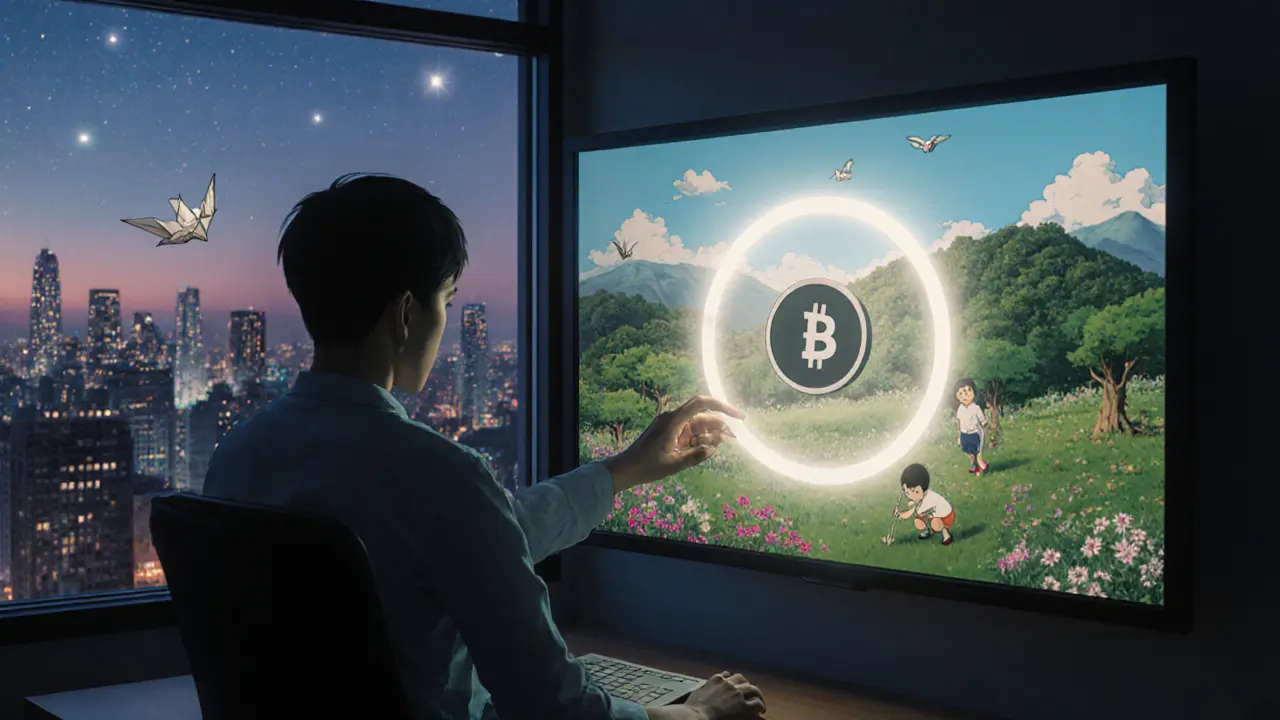
Future of Carbon Credit Trading
The voluntary carbon market was worth $2 billion in 2024. Some analysts predict it could hit $1 trillion by 2040. That growth won’t happen without blockchain.Next steps? More integration. Registries like Gold Standard are now developing their own tokenization standards so they don’t rely on third-party bridges. Governments are watching. The EU’s Carbon Border Adjustment Mechanism (CBAM) could soon accept blockchain-verified credits. That would force global supply chains to adopt the tech.
Also coming: NFT-based credits for high-impact projects. Imagine buying an NFT that represents a single mangrove tree planted in Indonesia-with photos, GPS, and live growth data embedded. You’re not just offsetting-you’re owning a piece of the solution.
The biggest challenge? Governance. Who decides what counts as a good project? How are disputes resolved? Right now, it’s a patchwork. But as more institutions join-banks, insurers, pension funds-they’ll demand rules. That’s how markets mature.
One thing’s clear: Carbon credits are no longer just a compliance checkbox. They’re becoming a real asset class. And blockchain is the only system that can scale it without losing trust.
Can You Buy Carbon Credits on Blockchain Today?
Yes. You don’t need to be a corporation. If you have a crypto wallet (like MetaMask), you can buy tokenized credits on decentralized exchanges like Uniswap or SushiSwap. Search for BCT or NCT (Nature Carbon Tonnes). Prices vary from $0.50 to $15 per tonne, depending on the project type and vintage.Just remember: Do your homework. Check the project’s original registry link. Look for Gold Standard or Verra certification. Avoid credits from HFC-23 or large hydro projects-they’ve been flagged for low integrity. Stick to renewables, reforestation, or clean cooking projects. They’re more likely to deliver real impact.
And if you’re a company? Start small. Use an API from Carbonmark or Flowcarbon. Retire a few hundred tonnes. Track the impact. Then scale. The tech is ready. The market is waiting.
Are blockchain carbon credits real?
Yes, but only if they’re backed by verified projects. Tokenized carbon credits are digital representations of real carbon offsets issued by trusted registries like Gold Standard or Verra. The blockchain doesn’t create the value-it just makes the process transparent and secure. A token is only as good as the project behind it.
Can I buy carbon credits on blockchain as an individual?
Absolutely. You can buy fractions of a carbon credit using a crypto wallet like MetaMask. Platforms like Toucan Protocol allow you to purchase BCT tokens on decentralized exchanges such as Uniswap. Prices start as low as $0.50 per tonne, making it accessible even for small buyers.
What’s the difference between BCT and NCT?
BCT stands for Basic Carbon Tonne, issued by Toucan Protocol using credits from Verra and other registries. NCT, or Nature Carbon Tonne, is a similar token but focuses specifically on nature-based projects like reforestation and wetland restoration. Both are fungible and tradeable, but NCTs emphasize biodiversity and community benefits alongside carbon reduction.
Why did KlimaDAO crash?
KlimaDAO crashed because it accepted a large volume of low-quality carbon credits from a discredited HFC-23 project in China. Although the credits were technically valid under Verra’s rules, they didn’t represent real emissions reductions. The incident showed that blockchain transparency doesn’t fix bad data-it just makes bad data more visible and widespread.
Are blockchain carbon credits regulated?
Not yet directly, but regulators are watching. The EU’s CBAM and California’s cap-and-trade system are starting to recognize digital verification. Many platforms now follow voluntary standards set by Gold Standard and the Integrity Council for the Voluntary Carbon Market (ICVCM). As demand grows, formal regulation is expected within the next 3-5 years.
Can blockchain carbon credits help fight climate change?
Only if they fund real, additional projects that wouldn’t have happened otherwise. Tokenization makes it easier to track and scale high-quality credits-like solar microgrids in off-grid villages or clean cookstoves in developing countries. When done right, it turns carbon markets from a loophole into a powerful tool for climate justice and environmental restoration.
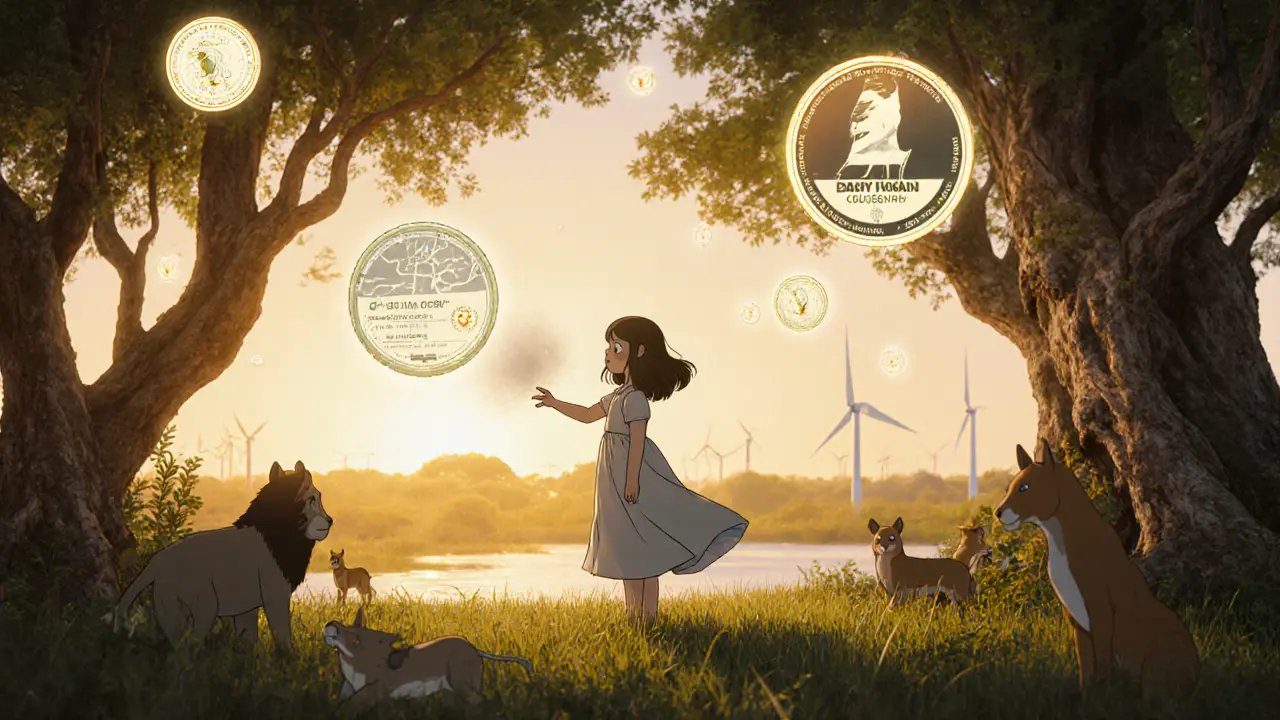


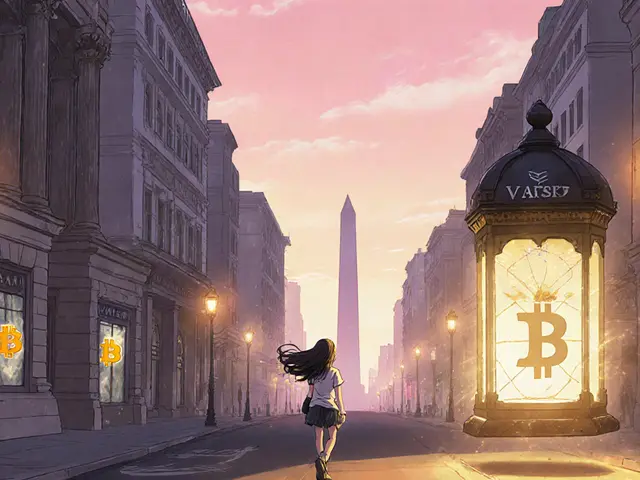


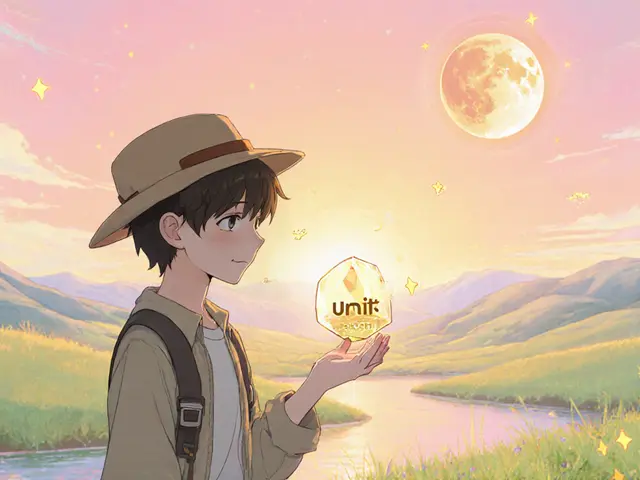
Write a comment
Your email address will be restricted to us